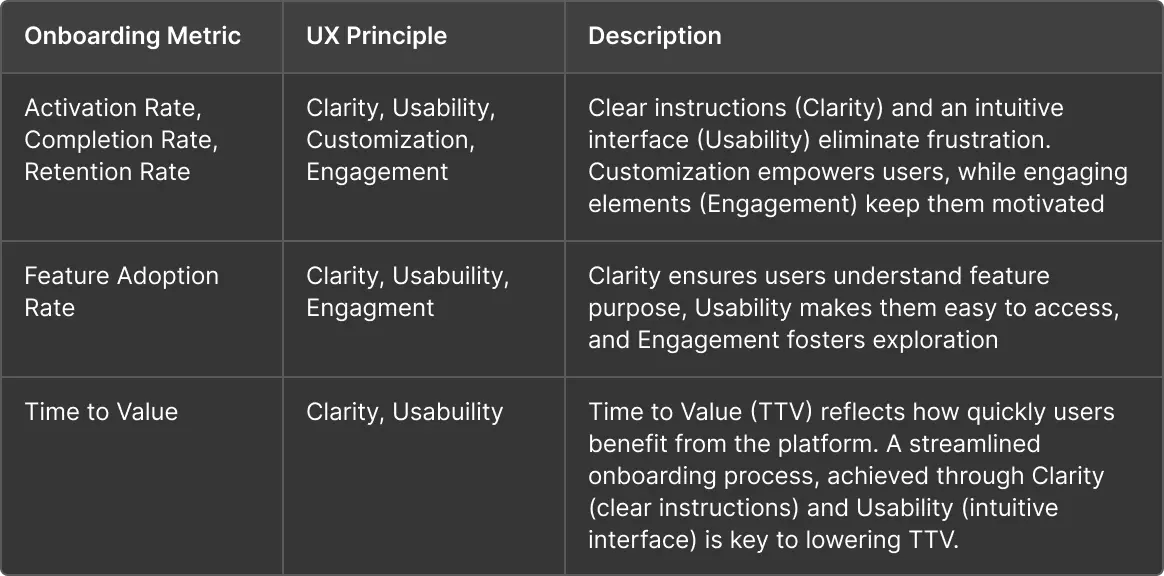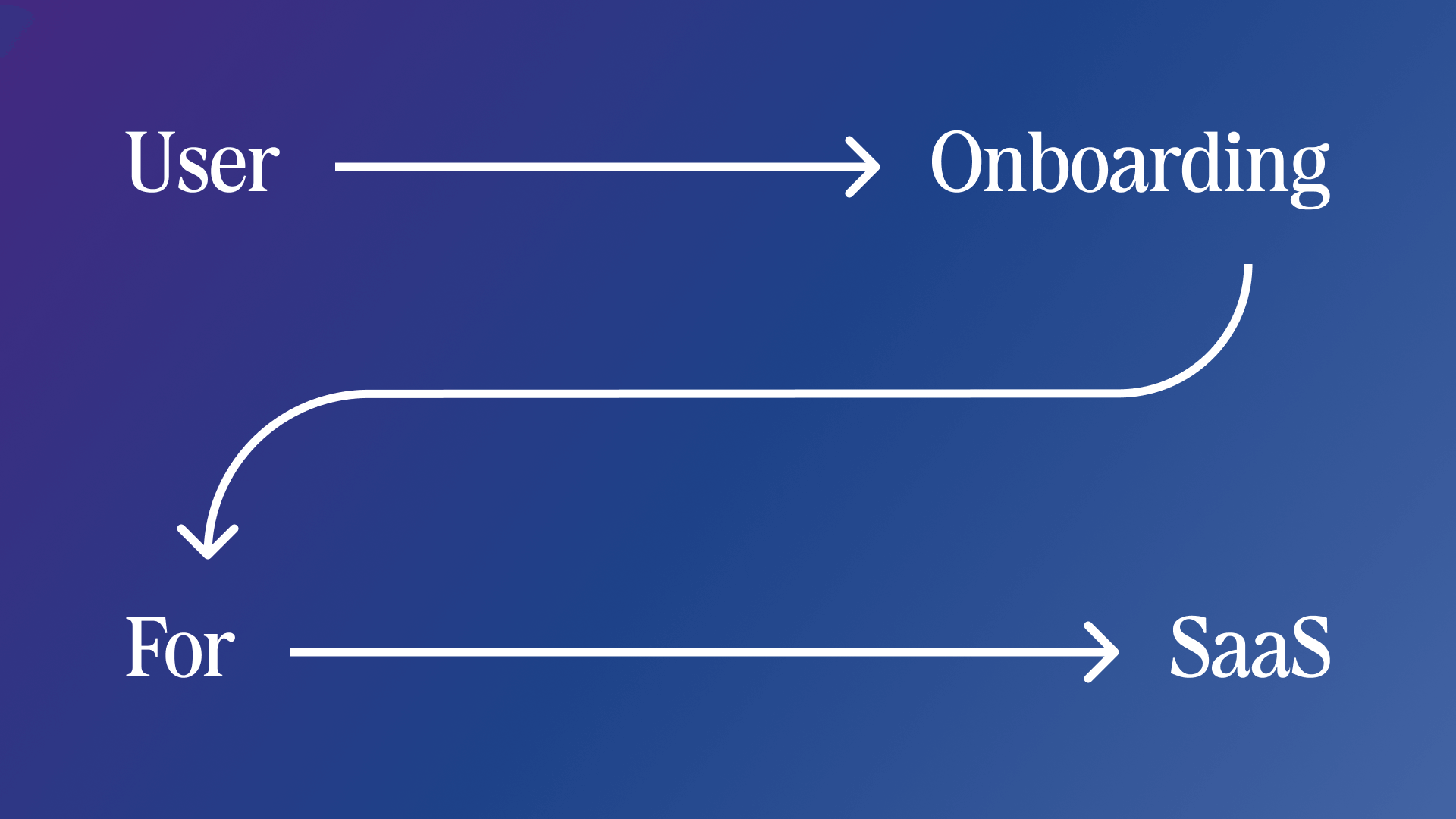SaaS User Onboarding is important for helping new users get the hang of your service right from the start. If you mess it up, you might lose potential customers. It's like giving them a smooth ride from signing up to becoming pros at using your product. This initial experience shapes their long-term perception of your platform, affecting both conversion rate and churn rate.
We offer a framework to help you master SaaS onboarding, drawing from our experience working with Route & Discovery clients. By examining what makes their user experiences successful, we'll also discuss how you can improve your onboarding UX design process.
What is SaaS User Onboarding and What Defines a Good One
User Onboarding is everything that happens after a new user signs up but before they actually start using your product. During this process, you guide them through your product and teach them all the basics about how to use it. By the end of this process, the user should have a clear understanding of what your product offers and how they can use it to achieve their goals. So enhancing user onboarding is crucial for conversion rate optimization.
When you're working on onboarding UX design, it's essential to consider onboarding best practices factors:
- Clear Instructions: Onboarding should offer clear and concise guidance, avoiding confusing language or making users hunt for answers. Think of it like navigating a road without any landmarks—confusing onboarding frustrates users.
- UX Usability: Picture moving through your onboarding flow as effortlessly as taking a leisurely stroll through a park. It's all about intuitive design that puts the user first. Users should move through the process smoothly, without any roadblocks or frustration. A well-designed onboarding feels natural, like it's part of the platform itself, making it easier for new users to understand.
- Tailored to User Roles: A one-size-fits-all approach just doesn't cut it! Does your onboarding adapt to each user's role, goals, or preferences? Personalization gives users a sense of control and boosts engagement. Think of it like starting a fitness program without a personalized plan—it's generic and doesn't cater to individual needs, which can dampen motivation and engagement.
- User Engagement: Keeping users interested and motivated is key. Does your onboarding include interactive features, progress trackers, or game-like elements to keep users excited about exploring the platform? Think of onboarding as a captivating story, not a dull instruction manual. By adding surprises, challenges, and rewards, you can keep users hooked and eager to discover more.
SaaS User Onboarding Metrics
Metrics give you hard numbers to evaluate your onboarding. Here are some important SaaS metrics to look at:
- Activation Rate: This measures the percentage of users who complete key actions after signing up. It shows how well you're turning new users into active and engaged ones. A high activation rate means users are finding value early in onboarding.
- Time to Value (TTV): This tracks how quickly users grasp the platform's value proposition. A shorter TTV means a well-designed onboarding process that helps users unlock benefits fast. The faster they see value, the more likely they'll stick around.
- Completion Rate: This analyzes the percentage of users who finish the entire onboarding. It shows where users might be getting discouraged or confused. By spotting these areas, you can find ways to improve. A low completion rate might mean unclear instructions or low engagement, prompting you to refine your onboarding.
- Feature Adoption Rate: Does your onboarding effectively guide users to key platform features? This metric measures the percentage of users who use specific features. A high adoption rate for core features means success in teaching users how to use the platform's power. A low rate might mean users don't see the value in certain features, so you might need to improve guidance.
- Retention Rate: This shows how many users keep using the platform after a specific period. A strong rate means the onboarding has integrated users into the platform well, ensuring long-term value. A low rate suggests users drop off after onboarding, highlighting the need to address any lingering issues or frustrations.
SaaS User Onboarding KPIs
While these SaaS KPIs can serve as targets, it's crucial to consider the specific context of your product. Here's a general overview to provide a basic understanding:
- Activation Rate: 25–30% is good, with 34% being the average for SaaS.
- Completion Rate: Aim for above 60%, though it depends on onboarding length.
- Retention Rate: Strive for >80% retention in month 1, >65% in month 3, and >40% in year 1.
- Feature Adoption Rate: A healthy rate for core features is above 30%.
- Time to Value: Ideally within a week for simple products, a few weeks for complex ones.
Framework to connect UX and Onboarding Metrics
After exploring fundamental onboarding UX factors and KPIs , let's dive into how these elements affect each other. A well-designed onboarding process isn't just about looks or sharing info; it strategically uses UX factors to influence user success metrics. Here's how it works:
- Clarity and Usability Boost Activation Rate and Time to Value: Clear, concise instructions in an intuitive format help users grasp core platform functions quickly. This leads to higher activation rates, as users confidently complete key actions. Plus, a user-friendly onboarding experience reduces the time it takes for users to see value, promoting early wins and motivation.
- Tailoring to User Roles Drives Feature Adoption Rate and Retention Rate: Tailoring onboarding to individual needs empowers users to discover relevant functionalities. This targeted approach deepens understanding of the platform's value, increasing adoption rates for core features. Customization also fosters satisfaction and a sense of control, contributing to stronger retention rates.
- Engagement Enhances Completion Rate and Retention Rate: Onboarding with interactive elements or gamification keeps users interested and motivated to finish. By fostering a sense of progress, engaging experiences lead to higher completion rates and increased likelihood of users sticking around beyond the introduction.

Create an onboarding experience that wows users and boosts business results by combining UX factors and metrics. Focus on clarity, intuitive design, and personalized experiences. Keep an eye on key metrics like activation rate, time to value, completion rate, feature adoption rate, and retention rate. Use this data to fine-tune your onboarding strategy, ensuring users feel confident and knowledgeable about your platform, leading to long-term success and loyalty.





